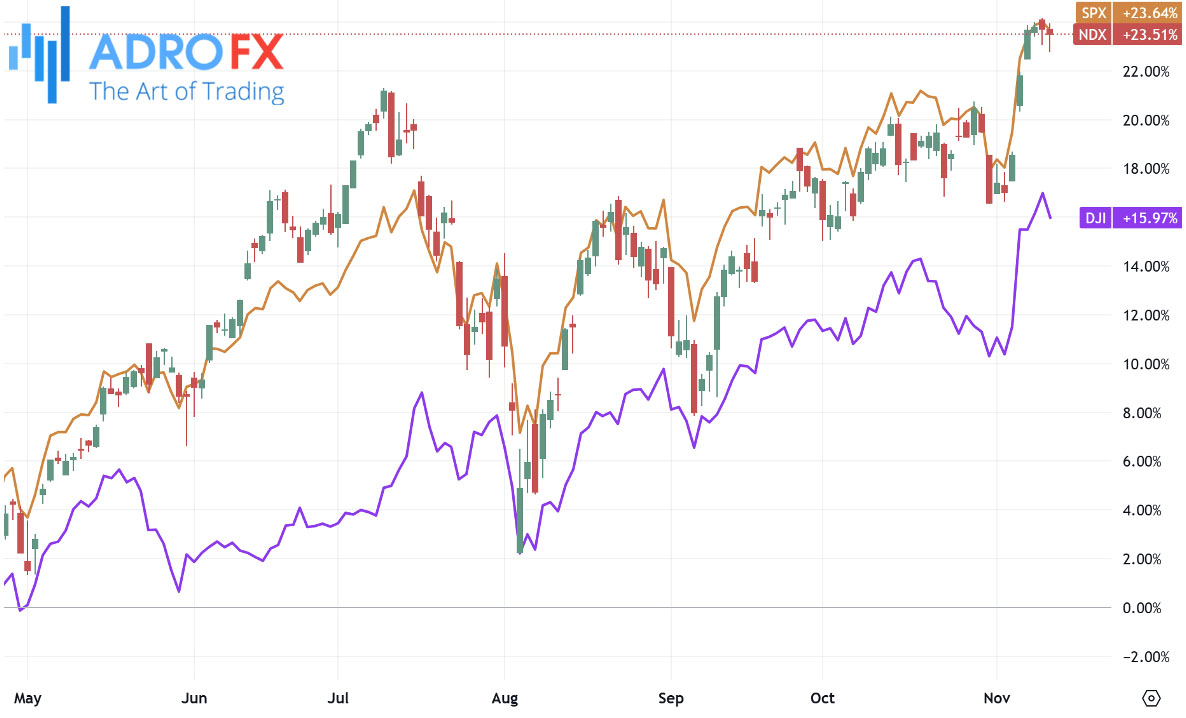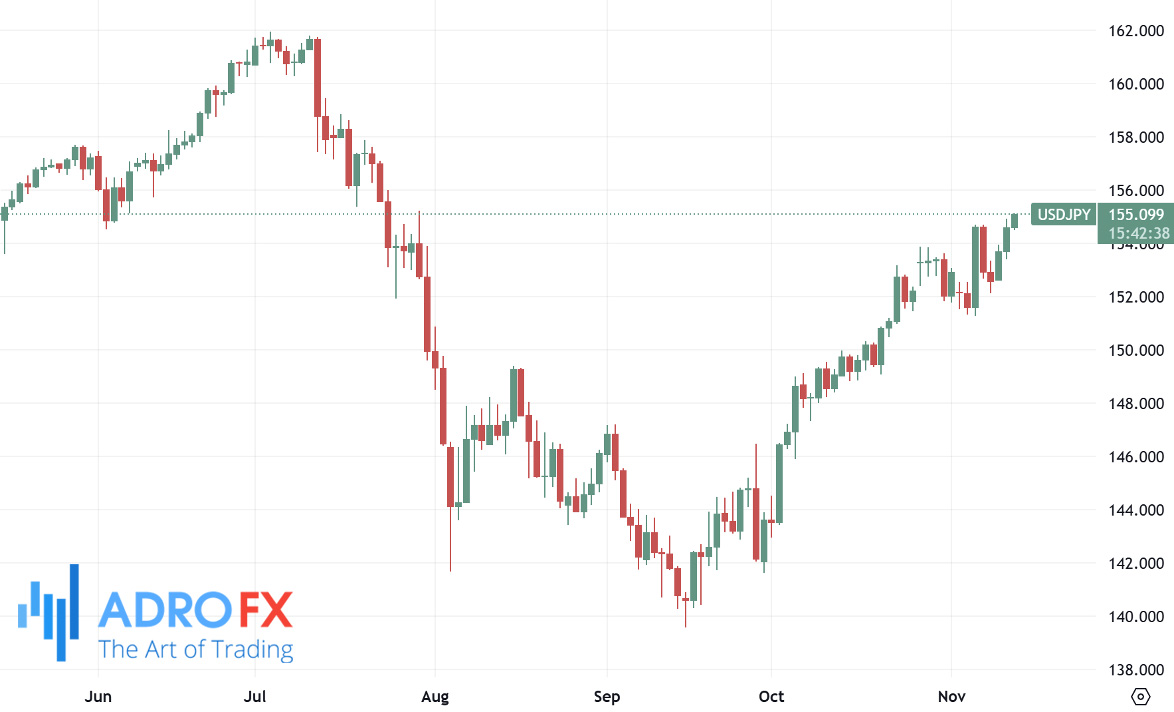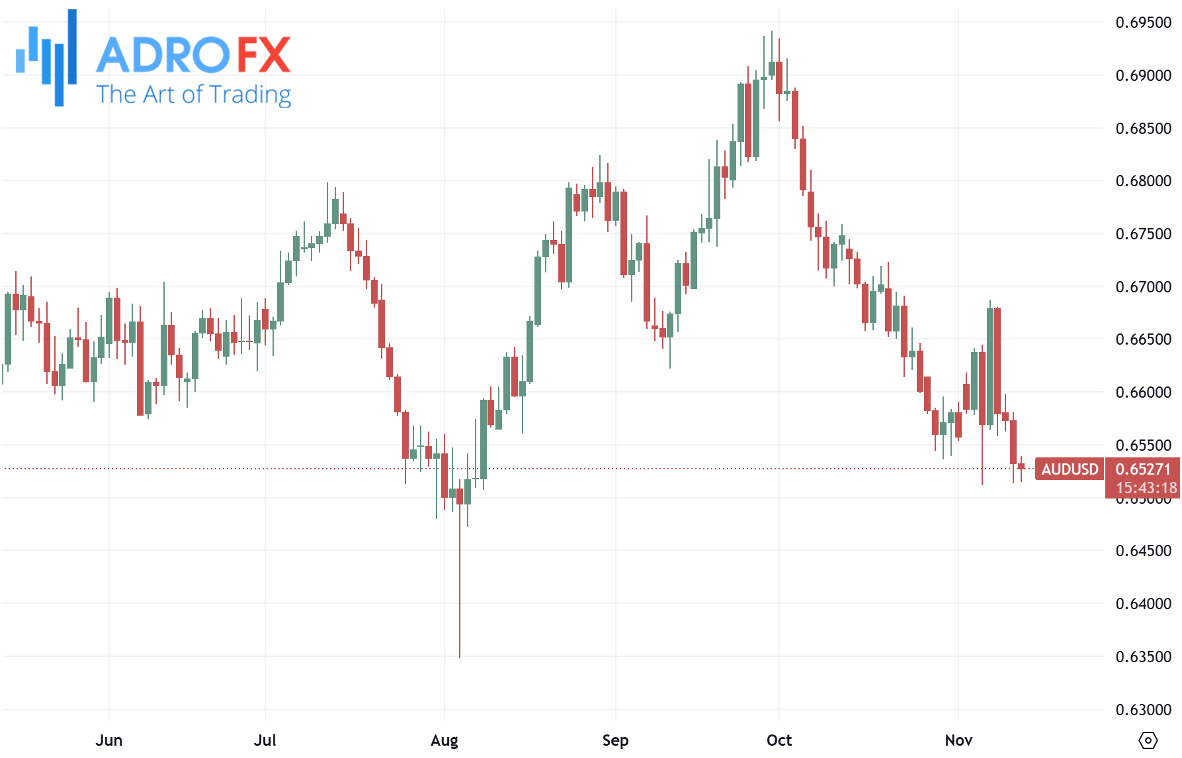Markets Turn Cautious as Inflation Data Looms: S&P 500 Dips, Currencies React to Geopolitical and Economic Pressures | Daily Market Analysis

Key events:
- USA - Core CPI (MoM) (Oct)
- USA - CPI (MoM) (Oct)
- USA - CPI (YoY) (Oct)
- USA - FOMC Member Kashkari Speaks
- USA - FOMC Member Williams Speaks
On Tuesday, the S&P 500 closed lower, taking a pause from its recent upward momentum as surging Treasury yields weighed on the market ahead of key inflation data due Wednesday.
The Dow Jones Industrial Average fell by 382 points, or 0.6%, while the S&P 500 slipped 0.3%, and the NASDAQ Composite dropped slightly by 0.1%. This downturn came as market sentiment grew cautious, with investors awaiting signals from upcoming economic data that could affect Federal Reserve policy decisions.

Shifting the focus to currency markets, the Australian Dollar sought to end its losing streak against the US Dollar in Wednesday's session. This attempted recovery followed a recent radio interview with Australia’s Prime Minister, Anthony Albanese, who discussed trade relations with US President-elect Donald Trump. Albanese emphasized Australia’s existing trade surplus with the US, reinforcing the importance of fair trade between the two allies. Despite these reassurances, the AUD/USD pair remained under pressure following the release of weaker-than-expected Wage Price Index data. This ongoing softness in the Australian Dollar reflects a combination of subdued domestic wage growth and the market’s focus on potential rate decisions by the Reserve Bank of Australia.

RBA Governor Michele Bullock recently reiterated the central bank's commitment to a hawkish policy stance, highlighting that inflation risks and strong employment trends necessitate restrictive monetary policy. This position has lent some support to the AUD, curbing further losses.
Meanwhile, the US Dollar strengthened across various currency pairs amid anticipation that Trump’s proposed fiscal policies could drive greater investment, increased consumer spending, and stronger labor demand, factors that may fuel inflation risks. If these projections hold, the Federal Reserve could consider a more restrictive approach, potentially opting for interest rate hikes to control inflationary pressures.
The Japanese Yen continues to face challenges, trading close to recent lows against the USD on Wednesday. This pressure stems from ongoing political uncertainty in Japan, which has investors doubting the Bank of Japan’s capacity for further interest rate increases. Additionally, concerns that Trump's potential tariffs could harm Japanese exports are contributing to the JPY’s weakness. However, speculation persists that Japanese authorities may intervene to bolster the currency if necessary, which has limited the decline for now.

In the Asia-Pacific markets, the New Zealand dollar traded steadily at around 0.5930 on early Wednesday. The NZD/USD pair has been constrained by the strengthening US Dollar, with upside momentum hindered by fears that Trump’s trade policies, particularly tariffs on Chinese imports, could indirectly impact New Zealand’s economy. China, a major trading partner for New Zealand, could experience slower growth if new tariffs are enacted, which would weigh on the China-sensitive NZD.

The British Pound continued its fourth consecutive session of losses, trading around 1.2740. The currency's weakness is attributed to a combination of mixed UK employment data and a strengthening USD. UK labor market data released Tuesday reflected a softening, with the ILO Unemployment Rate climbing to 4.3% for the three months ending in September, surpassing the anticipated 4.1%. Employment Change figures also indicated slower job growth, with only 219,000 new positions added, down from the previous report of 373,000.

Adding to investor focus on the GBP, Catherine Mann, an external member of the Bank of England’s Monetary Policy Committee, is scheduled to speak at the BNP Paribas Global Market Conference on Wednesday. Mann’s commentary may offer valuable insights into the BoE’s strategies for managing inflation and economic imbalances in the UK. With the UK economy grappling with rising inflation, traders are eager to gauge the BoE’s potential policy adjustments.
Looking ahead, market participants are now shifting their focus to the highly anticipated US inflation data set for release on Wednesday. Analysts expect the Consumer Price Index (CPI) to show a 2.6% year-over-year increase for October, with core CPI projected to rise by 3.3%. These readings will provide essential clues about the current inflationary environment and could influence the Fed's future monetary policy actions.
The impact of the inflation data release will be closely scrutinized, as it may reinforce or challenge the Fed’s current rate stance. Should inflation come in above expectations, it would likely pressure the Fed to consider further rate hikes. On the other hand, if inflation appears to be cooling, the Fed might adopt a more cautious approach.
In summary, Tuesday's declines in the S&P 500 and other major indices, driven by rising Treasury yields, have set a cautious tone for the midweek market session. Currencies remain influenced by a combination of geopolitical developments, trade policy expectations, and central bank outlooks, all while investors await critical inflation data. The trajectory of US monetary policy remains central to global markets, as it could shape financial conditions in the months ahead, impacting both equities and currency markets.









